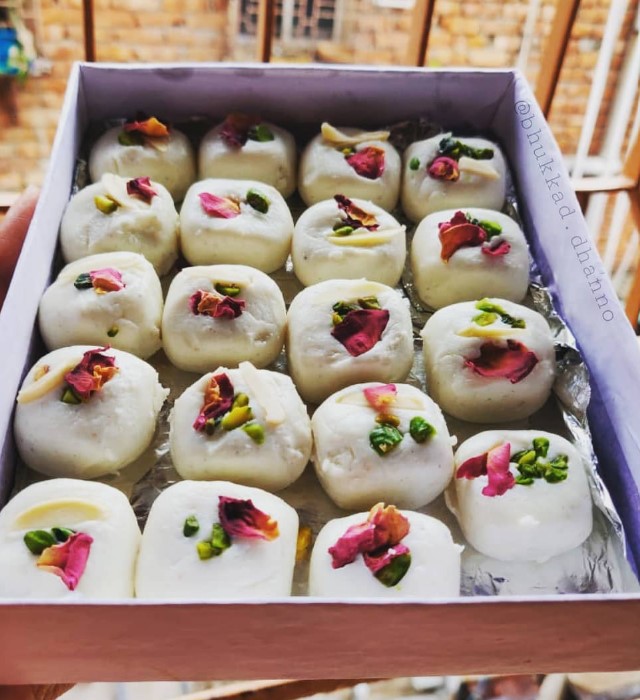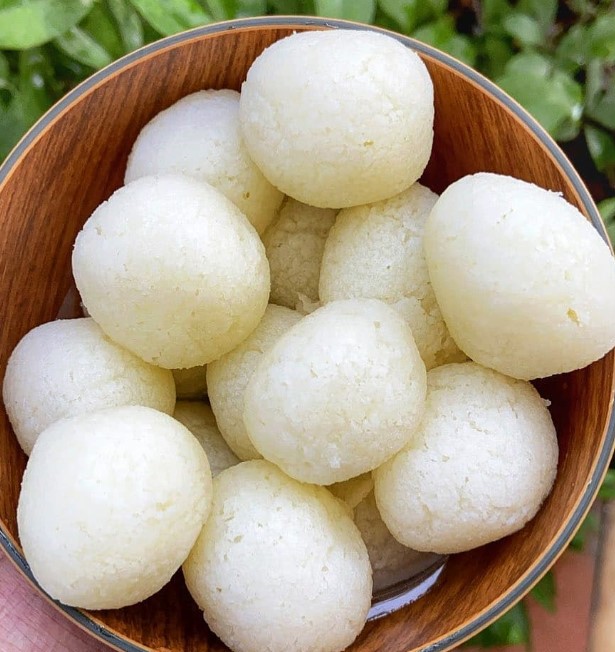With confectioners and mithai shops lining almost every sidewalk, it comes as no surprise that Kolkata is the City of Joy. Its residents have been savouring Bengali sweets for — take a guess — over two centuries!
For instance, take the ‘Adi Haridas Modak Mistanna Bhandar’ — one of the oldest mithai shops in the city, which has been churning magic since as far back as 1780.
For those who love starting their day on a sweet note or ending it with a feast, there is always the jibe gaja (a fried Bengali snack prepared with flour) and kalojam (flour balls deep fried in sugar syrup).
It is hearsay that the outlet was once frequented by the likes of Netaji Subhash Chandra Bose and Raja Ram Mohan Roy. But we aren’t surprised. A closer look reveals that on any given day, it was completely normal to see one of the revolutionaries and freedom fighters, or even the British Lords stop by for a cuppa with their snack.
Today, the pictures on the walls of these iconic eateries and mithai shops are a testament to these stories. And we take a look at them.
1. Kotal’s Satyanarayan
With traditional sweets glistening in sugar syrup behind the glass facade, as well as mithais that have been perfected with a new spin, Kotal’s Satyanarayan continues to be a favourite haunt for those with a sweet tooth. The sweetmeat manufacturing business house was established in 1952 and has expanded to a chain of retail outlets across the city.
As food and travel writer Malini Banerjee shares in an interview with Conde Nast, “The nolen gurer bacchabog (a sweet made with jaggery) at Kotal’s Satyanarayan is fantastic. They are just the right balance between spongy and chewy. They also have a kheer filling in the centre, which is called kheerer guti. It’s like a little surprise rosogolla inside. The three-generation old shop is very famous in Tollygunge and Moore Avenue and the bacchabogs are priced at just Rs15.”
2. Nalin Chandra Das and Sons

A line on the website catches my eye. “From North to South and East to West, anywhere you can go but you have to go to Nalin’s shop to get delicious and exclusive varieties of sandesh.”
For anyone who is looking to spend a leisurely afternoon in the city, this has to be a stop. For over 175 years, the sweet shop has been priding itself on its sandesh (a milk-sweet made from fresh curd cheese). But even more fascinating than the taste of their sweets is the story of how they came up with the first recipe.
The founder Johuree Lall Das had fled to the city from his village in Dubrajhat — where the Britishers were forcing Indians to engage in indigo cultivation. In Kolkata, he began making sandesh. The story goes that a barrister Biswajit Ghosh of Pathuriaghata once gave Das cocoa powder that he brought back with him from his trip to England and challenged him to prepare the sandesh using the powder. Thus, Das made their very first chocolate sandesh, which they continue to serve today.
3. KC Das

Fans of the rosogolla, attention!
The story of how the sweet came to be is a fine example of what can transpire with a little innovation. The rosogolla was the result of an afternoon experiment in 1868 by a man named Nobin Chandra Das. Rolling balls of curdled milk and then boiling them in sugar syrup resulted in the beloved sweet that Kolkata and the globe adore.
According to an article in Forbes India, even Rabindranath Tagore was a fan of the place’s rosogollas. The story is often retold of a time Tagore was served a pot of rosogollas by one of his acquaintances. Tagore nibbled at one and then asked if it was Das who had prepared these. It wasn’t. Tagore then said, “If you must feed me rosogollas, make sure it’s from Nobin’s.”
4. Balaram Mullick & Radharaman Mullick
The guest list at this 144-year-old sweet shop has always been coloured. From journalists, the likes of Barkha Dutt and Prannoy Roy; and celebrities, the likes of Ranbir Kapoor, to legendary figures such as Ashutosh Mukherjee (a prominent Bengali educator) — everyone seems to have relished the fares served here.
The founder Ganesh Chandra Mullick came to Kolkata from Konnagar in 1880. He worked for three years as a sweet karigar in a North Kolkata shop before setting up Balaram Mullick & Radharaman Mullick in 1883 in Bhowanipore (South Kolkata) on a 450 sq ft land. The eatery is now famous for its korapak (a Bengali sweet made with cottage cheese) and nolen gur (a special jaggery found in Bengal).
During the Emergency, when milk was banned, the women of the family stepped up to create sweets out of cashews and pulses to keep the business running.
5. Chittaranjan Mistanna Bhandar
A major draw here is the spongy, sweet, dribbling in sugar syrup rosogolla. In fact, the iconic Chittaranjan Mistanna Bhandar is one of the 71 certified sweet shops in the city to sell this GI product of Bengal.
While the rosogollas at this 115-year-old eatery are delightful — earning the sweet outlet the name of ‘Rosogolla Wala of Kolkata’ — their madhuporko (a sweet made from curd, ghee and honey) is equally amazing. And a fan of it is none other than Indian chef Saransh Goila.
6. Girish Chandra Dey And Nakur Chandra Nandy
“I love Calcutta. The food is just brilliant. Every time I go, I must have sweets from Nakur (Girish Chandra Dey & Nakur Chandra Nandy), especially the jolbhora and manohara,” celebrity chef Ranveer Brar shared in an article with Telegraph India.
The eatery is a renowned one in Kolkata and one of the most legendary sweet places. As their website states, Nakur Chandra Nandy was the son-in-law of the renowned confectioner of Shimla, Girish Chandra Dey. The venture is a joint initiative by the duo and their sandesh has found love in many personalities — such as Abhishek Bachchan, Aishwarya Rai, West Bengal Chief Minister Mamata Banerjee, and Satyajit Ray among others.
7. Bhim Chandra Nag

Credited with creating the ledikeni, a popular Bengali sweet, this sweet shop, over two centuries old, has watched the city evolve into its present form. At the turn of the 19th century, as reform and renaissance were rife in Bengal, sweet shops began mushrooming across the city. That’s when Paran Chandra Nag, too, decided to channel his skills into mithai making at his shop in Bowbazar, Kolkata. Starting in 1826, this seasoned sweet shop began to amass a great crowd, and among them was Sir Ashutosh Mukherjee.
An article in Lifestyle Asia tells an anecdote of how Lady Canning, wife of the then viceroy of India, Charles John Canning, was once visiting erstwhile Calcutta in 1858 and wanted a special sweet made for her birthday. Nag took up the challenge! And it is this creation that was named after Lady Canning, which over the years became ‘ledikeni’.
8. Flury’s
A hub that saw a flurry of activity, this outlet on Park Street was founded in the year 1927 by a couple Mr and Mrs J Flury. It was frequented by some of the most notable names in both Indian and British history. A favourite tea room amongst the royal and politically inclined, the eatery has witnessed people from all over the world.
From a single eatery on Park Street to over 68 outlets across India, Flury’s brand name has continued to garner love from across the world. In fact, the eatery was featured on the 2023 list of ‘150 most legendary dessert places in the world’ released by the popular food guide Taste Atlas.
Flury’s rum balls and chocolate sponge cake are pure bliss!
Edited by Pranita Bhat.
No comments:
Post a Comment